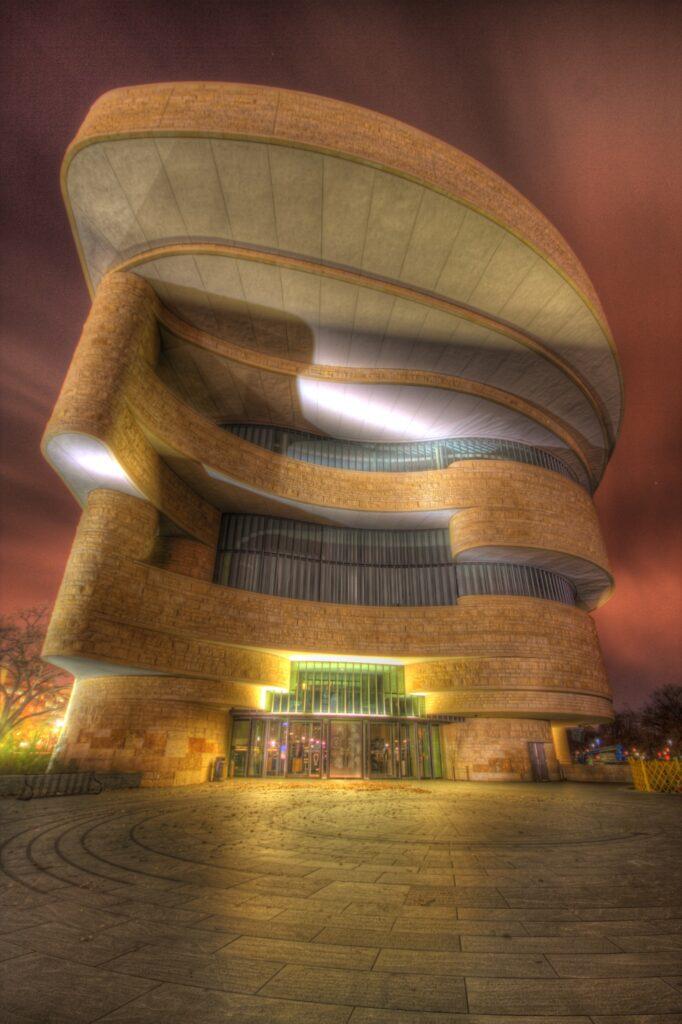Georgetown University and various institutions in Washington, D.C. have hosted cultural and educational events to celebrate Native American Heritage Month this November.
In addition to several educational talks and events on campus, libraries and museums across the District featured several cultural expositions intended to showcase Native American art, literature and history.
The District of Columbia Public Library Foundation hosted a number of author panels, including a book talk on a work titled “Native American History of Washington D.C.,” as well as historically oriented events including “Learning About Indigenous Peoples,” which had a special focus on D.C. At the National Museum of the American Indian, celebrations include a cinema festival and a dance performance.

Matika Wilbur, the creator of Project 562, a project intended to photograph over 562 federally recognized tribes and urban Native communities, as well as other tribes fighting for recognition from the federal government, spoke at the Martin Luther King Jr. Memorial Library on Nov. 9 about her work.
“That’s the real reason that I’m here tonight, is to present to you this idea of an indigenous future. To dream of speaking indigenous languages — maybe you could teach it here at the library,” Wilbur said at the event. “To dream of an idea, not where indigenous people are a people of the past, but indigenous people and our scholarship, and our intelligence, and our lifeways and our ethics are a part of the future.”
Simone Guite (CAS ’26) said she and other Native American students on campus have found a home in the Circle of Indigenous Students’ Alliance (CISA).
“The indigenous student population on campus is very, very small, so CISA is a place for us all to come together,” Guite told The Hoya. “It’s a community space for us to all just hang out and kind of detox from what can be a very heavy workload that Georgetown gives us.”
Catholic Relief Services, Georgetown University’s Collaborative on Global Children’s Issues and the Georgetown University Indigenous Studies Working Group co-hosted a Nov. 9 event titled “What Do Truth and Healing Require?,” which provided insight into the Catholic Church’s separation of indigenous children from their families.
Ian Manzi, a program assistant at the Collaborative on Global Children’s Issues, said the fact that the event took place at Georgetown, a Catholic university, signifies progress toward addressing the harmful history of family separation.
“For us, we hope it signals to the world that it is possible to have these discussions in a constructive and responsible manner,” Manzi wrote to The Hoya. “We hope it shows that there’s a way to create a platform that recognizes the difficult history involved, the present responsibility each one of us has towards the past and the future, and the potential for a better future built intentionally and together.”
The historical issue of family separation encompasses centuries of the Catholic Church forcibly sending children far from home to mission schools that were often abusive. Manzi said the event specifically prioritized the voices of those whose lives have been affected by family separation to humanize the discussion of the issue.
“One of our core values is that lived experience is expertise. So, for us, the most informative and important part of most discussions is listening to people who have lived the experience, as well as practitioners actively working on these issues on the ground and allowing them to guide and shape the discussions,” Manzi wrote.
A university spokesperson said Georgetown is particularly engaged in celebrating indigenous culture in part because of the Native American history in the District.
“We deeply respect and are open to engaging with the Piscataway tribe, whose ancestral lands include the District of Columbia,” the spokesperson wrote to The Hoya. “The university is extremely supportive of exploring programming, and course options that share our diversity, equity and inclusion values, and reflect the broad interests of our students.”
Guite said she feels an official physical space would be key in working to further build community among indigenous students at Georgetown, and that Campus Ministry in particular has offered such resources to CISA.
“We did partner with the president’s office last year, and they’ve been really great. We also recently have been working very closely with Campus Ministry, and they’ve been awesome to us in terms of providing resources and a place to meet,” Guite said.
Guite said despite centuries of the United States’ government oppression of indigenous peoples, the indigenous community at Georgetown and in D.C. is thriving.
“We still are out here even though the government has tried for so long to remove us,” Guite said. “But so I would just say engaging with the community and learning more about indigenous people in you know, not only the D.C. area, but in the larger United States in North America, as well through different events that celebrate them.”





















